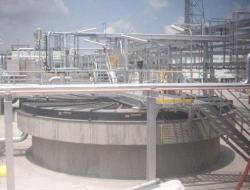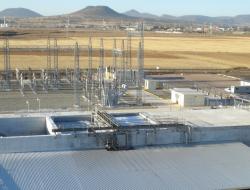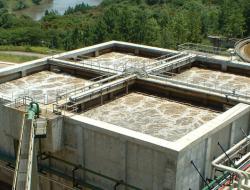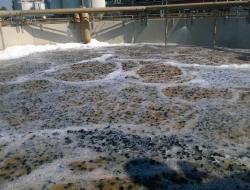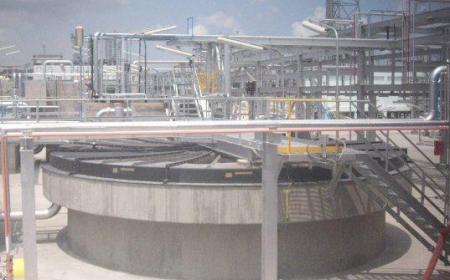
The first stage of wastewater treatment in petrochemical applications is normally the deployment of API or coalescing plate interceptor (CPI) equipment for the removal of large amounts of oil and suspended solids from the effluent. These units use gravity and density differences between oil droplets, water and suspended solids to separate the different substances from each other. When it has risen, an oil layer is skimmed from the water surface, while bottom layers of sediment are removed by scraper and sludge pump. In CPI units, the separation of oil from water is intensified by the water motion through the plates, which collect oil droplets together as larger ones to separate them from water more easily.
FlooDaf® microflotation
Residual oil and suspended solids are separated by dissolved air flotation (DAF) called FlooDaf® microflotation. During this process pressurized air is dissolved into recycled effluent water to generate micro bubbles. The pressure is then released into the feed flow. The bubbles produce agglomerates with smaller specific gravity than that of water by attaching themselves with suspended particles. These agglomerates rise through the liquid and the air-water-solid mixture is distributed uniformly across the flotation tank, thus forming a floating sludge layer that is removed by surface skimmers. Heavier solids settle to the bottom of the tank and can be discharged from there. Clear liquid supernatant on the sediment layer is withdrawn under a tank baffle and over the weir for reuse or for treatment by coagulation and flocculation.
For coagulation and improved flocculation, chemical treatments are usually needed to maximize the efficiency of floc formation and separation. Emulsions of oily materials can be broken by acidification, the addition of alum or iron salts (inorganic coagulants) and by using emulsion-breaking polymers.
Flootech offers circular and rectangular FlooDaf® microflotation units of several sizes and varieties to suit the particular needs of individual sites and to optimize the process.
